Sunday, November 2, 2008
Thursday, June 21, 2007
Tuesday, June 12, 2007
The History of West Virginia
West Virginia was the only state formed as a direct result of the Civil War. In 1860, with the election of President Lincoln, many southern states began to secede from the Union, setting the stage for the Civil War. On November 15, 1860, a convention was held in Richmond to decide whether Virginia would also secede from the Union or stay. For the first two months of the convention, the general consensus among the delegates was that Virginia would stay in the Union. However, on April 12, 1861, Ft Sumter surrendered to the Confederate forces and three days later, President Abraham Lincoln issued a call for 75,000 troops to put down the rebellion. It was these events that convinced the majority of the delegates that it was time for Virginia to secede from the Union. On April 17, 1861, the Ordinance of Secession was passed by a vote of 88 to 55. The Western delegates withdrew from the convention and began to plan an opposition to the ordinance.
Throughout the western part of Virginia, citizens met in support of the opposition to the ordinance. The majority of western Virginians opposed the Ordinance of Secession.
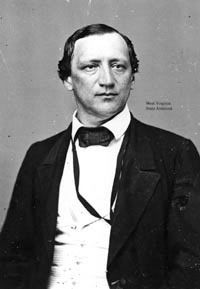
John Carlile
"On May 14, John Carlile proposed a resolution for the creation of the new state of New Virginia. Opponents deemed this proposal revolutionary, and the majority of the delegates supported resolutions offered by the Committee on State and Federal Resolutions, which recommended that if the people of Virginia approved the Ordinance of Secession on May 23, western Virginians would elect delegates to a Second Wheeling Convention to begin on June 11, 1861."(from http://www.wvculture.org/history/statehood/statehood05.html)
On May 23, 1861, the Ordinance of Secession was approved by the voters of Virginia. During the months that followed, the citizens of western Virginia met to voice their opposition or support for the ordinance. When Governor John Letcher announced that the ordinance had been passed and that most of the votes from western Virginia had not been delivered to Richmond, the voters were outraged.
On August 6, 1861, the delegates of the Second Wheeling Convention reassembled. During this convention, the delegates passed an ordinance that voided the actions of the Richmond Convention, declaring those actions "illegal, inoperative, null, void, and without force or effect."
The convention then assembled a committee on the Division of The State. After a week of deliberations, the committee presented a dismemberment ordinance to the delegates of the convention. Delegates then debated for several days over the boundaries of the new state. On August 20, 1861, the committee proposed that the new state, to be named Kanawha, would consist of 39 counties, with 7 more counties to be added if the majority of those voters approved of it. On October 24, 1861, the voters in the counties of the newly proposed state would have their say.
"You have taken the initiative in the creation of a new State," convention president Arthur Boreman remarked in adjourning the convention. "This is a step of vital importance. I hope, and I pray God it may be successful; that it may not engender strife in our midst, nor bring upon us difficulties from abroad, but that its most ardent advocates may realize their fondest hopes of its complete success. So far as I am personally concerned, I am content with the action of this Convention; I bow with submission to what you have done upon this subject."
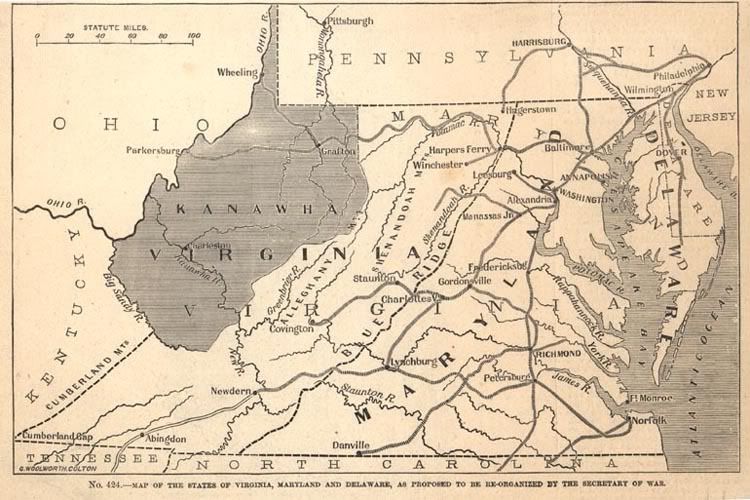
Map of the proposed new state of Kanawha
After the ballots were counted, it was shown that 18,408 had voted in favor of the new state while only 781 opposed. On November 26, 1861, delegates met in Wheeling to create a constitution for the new state. Among the issues discussed at the meeting were the name of the new state, boundaries and slavery.
The name "Kanawha" was opposed by many of the delegates who said that there were already a county and two rivers with that name. A lengthy debate began over the name of the new state. Some spoke in favor of including "Virginia" in the name while others opposed it. Eventually, the name "West Virginia" was selected.
West Virginia voters went to the polls on May 28, 1863 to elect their new officials. Arthur I. Boreman of Wood County was elected as West Virginia's first governor. Governor Boreman referred to West Virginia as "the child of the rebellion," and stated that "to-day after many long and weary years of insult and injustice, culminating on the part of the East, in an attempt to destroy the Government, we have the proud satisfaction of proclaiming to those around us that we are a separate State in the Union."
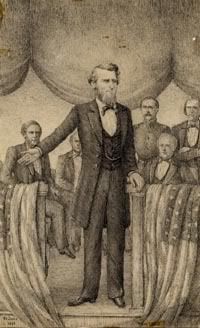
Arthur I. Boreman
Eventually, the question of constitutionality of the formation of the new state was brought before the United States Supreme Court, in the case of Virginia vs West Virginia (1870). Virginia repealed the act of cession and in 1866 brought about a suit against West Virginia, asking the court to declare the counties of West Virginia as part of Virginia. The Supreme Court sided with West Virginia and there was never any further debate on the matter.
Beginning in 1865 during Reconstruction, Virginia and West Virginia argued over West Virginia's share of the pre-War Virginia debt. In 1915, the issue was settled by the Supreme Court who ruled that West Virginia owed Virginia $12,393,929.50. The debt was paid off in 1939.
Besides the dispute over the debt, disputes over the exact location of West Virginia's border in some of the northern mountain regions of Loudoun County, Virginia and Jefferson County, West Virginia continued well into the 20th century.
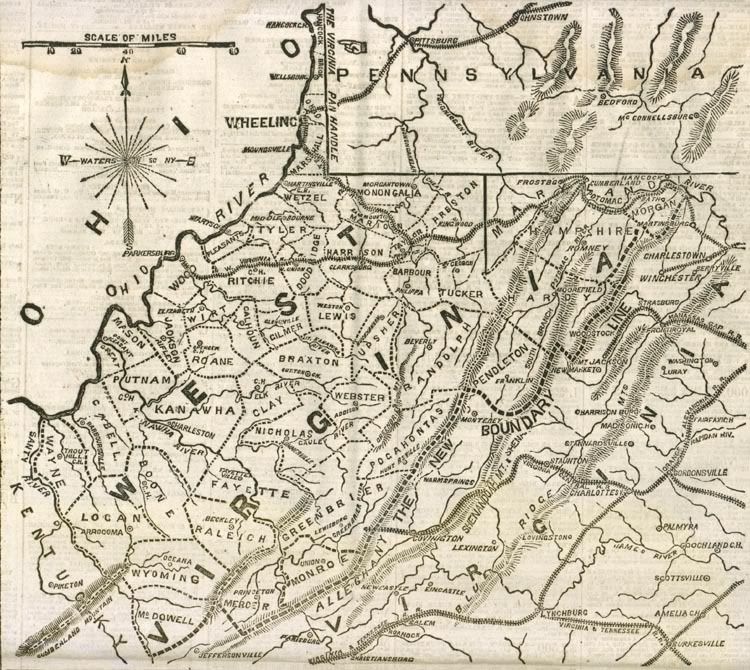
Map of the new state of West Virginia
On this day in West Virginia History:
Click HERE to see what happened today in West Virginia History.
Railroads of West Virginia
The Baltimore and Ohio Railroad (B&O) is the nation's oldest railroad and more than half of its line it located within West Virginia's borders. The B&O was created in order to speed up shipping of goods from the Ohio Valley, a process that before the creation of the B&O took weeks to do. This railroad was considered very valuable. It was so valuable that both the Confederacy and the Union sides fought desperately to keep the B&O from falling into enemy hands.
As the industries of America became more and more mechanized, the factories needed more and more coal to heat their furnaces. The Chesapeake and Ohio (C&O) Railroad made mining in the southern part of West Virginia - an area which is very mountainous - possible. It was on this railroad that the legend of the railman John Henry was born.

John Henry is an African-American folk hero, who has been the subject of many a song, play and story. Like other folk heroes such as Paul Bunyan and Pecos Bill, John Henry served as a mythical representation of a particular group within the melting pot of the 19th-century working class. (from http://en.wikipedia.org/wiki/John_Henry)
While larger railroads took advantage of the abundance of coal, smaller railroads were built by timber companies to haul lumber. One such train is the Cass Railroad. In its yesteryears, the Cass Railroad hauled tons of lumber. But today, it hauls hundreds of passengers on scenic trips. One of its engines, the Shay #5, celebrated its centennial birthday in 2005. Other railroads that offer scenic tours include the Potomac Eagle Scenic Railroad, the Tygart Flyer, The Cheat Mountain Salamander, and The Durbin Rocket.
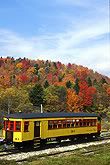
Railroads helped West Virginia to grow and prosper, but they also served to help showcase the beauty of the state to the world. Even rail lines that are no longer in use attract visitors to the state. There are currently more than 375 miles of these "rail trails" in West Virginia. Rail trails are formed when communities come together and turn a former rail line into a trail that can be used for hiking,walking, biking and running.
West Virginia Railroad Events for 2007
Here is a partial list of special events held by the various railroads in West Virginia:
May 25
Murder Mystery Special - Cass Scenic Railroad State Park. Murder mystery, train ride, buffet dinner. Fee for event. Cass, 800-CALL WVA. www.cassrailroad.com
June 1-3
Whistles, Wings and Wildflowers Weekend - Cass Scenic Railroad State Park. Birding and wildflower train with nature walks, talk and exploration of the outdoors. Lodging discount available. Cass, 800-CALL WVA. www.cassrailroad.com
June 16
Fiddles and Vittles Train - Cass Scenic Railroad State Park. Evening train ride, buffet-style dinner, live bluegrass music. Also available other dates throughout the summer. Cass, 800-CALL WVA. www.cassrailroad.com
July 13-14
Roundhouse Raildays Roundhouse Raildays celebrates the historic one-of-a-kind roundhouse with exhibits and entertainment. Martinsburg, 304-260-4141. www.martinsburgroundhouse.com
July 18-21
Durbin Days Carnival, great entertainment, train rides, fireworks, parade and much more. Durbin, 800-336-7009. www.pocahontascountywv.com
July 23-29
Cowen Historical Railroad Festival Pageants, parade, fishing contest, car and motorcycle shows, horseshoe contest, arts and crafts, food and entertainment. Cowen, 304-226-3206.
September 29
Harvest Day & Harvest Special Train - Cass Scenic Railroad State Park. Town fills with demonstrations, antique engines, storytelling, live music, dancing and train rides. Cass, 800-CALL WVA. www.cassrailroad.com
October 20-21
World-Famous New River Train 300-mile round-trip rail excursion from Huntington to Hinton, with a trip through the 65-mile New River Gorge. Huntington, 866-639-7487. www.newrivertrain.com
November 10-11
Pocahontas NRHS Model Train Show Complete show for all railroad enthusiasts. Family event not to be missed. Bluefield, 304-431-2593.
The Battle of Carnifex Ferry
"The Battle of Carnifex Ferry took place on September 10, 1861 in Nicholas County, Virginia (now West Virginia), as part of the Operations in Western Virginia Campaign during the American Civil War.
Learning of Col. Erastus Tyler's rout at Kessler's Cross Lanes, Brig. Gen. William S. Rosecrans moved three brigades south from Clarksburg to support him. On the afternoon of September 10, he advanced against Confederate Brig. Gen. John B. Floyd's camps at Carnifex Ferry. Darkness halted several hours' fighting. The strength of the Union artillery convinced Floyd to retreat across the Gauley River during the night. Floyd blamed his defeat on his co-commander Brig. Gen. Henry A. Wise, contributing to further dissension within the Confederate command. "
(from http://en.wikipedia.org/wiki/Battle_of_Carnifex_Ferry)
Rosecrans' decisive victory over Confederate Brigadier General John Floyd made the formation of a new state possible by protecting western Virginia from Confederate advances.
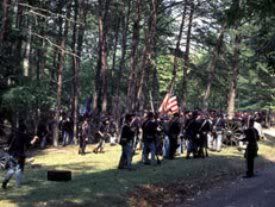
Located on the rim of the Gauley River Canyon near Summersville, the Carnifex Ferry Battlefield State Park was established to commemorate the Battle of Carnifex Ferry. It is one of the oldest state parks in the United States. Located within this 156-acre park is the Patterson House Museum, picnic areas, three overlooks of the Gauley River, and hiking trails. Living history demonstrations and a reenactment of the Battle of Carnifex Ferry are done during the Civil War Weekend (held this year on September 8-9, 2007). Civil War memorbilia and souvenirs are also offered for sale.
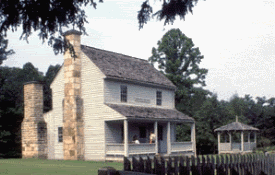
Every other year in September, hosted by Co. A of the 36th Virginia Infantry (West Virginia's oldest and most authentic living history organization), the Battle of Carnifex Ferry is reenacted on the same ground it was orginially fought on. This two-day event features living history demonstrations of camp life, military drill,and a reenactment of the Federal assault on the center of the Confederate line. This event is considered to be one of the finest small scale reenactments in the eastern United States.
West Virginia's State Stamp
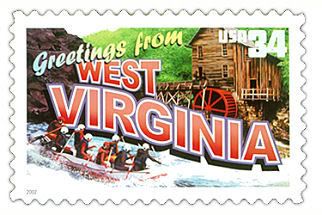
This is the West Virginia state 34 cent stamp from the Greetings From America commemorative stamp series. The United States Postal Service released
Summersville Lake - Fun for Everyone
Summersville Lake, the largest lake in West Virginia, is a man-made reservoir near Summersville. It was constructed between 1960 and 1966 by the US Army Corps of Engineers in order to control flooding along the Gauley and Kanawha Rivers, as well as to provide recreation and enable fish and wildlife management. The Summersville Dam, a 390 ft x 2280 ft structure and the second largest rock fill dam in the Eastern United States, was built to hold back the water. Usually dams are named after the nearest town with a post office. The nearest town to the dam was the town of Gad. However, instead of calling it the Gad Dam (insert joke here), they named it the Summersville Dam. This broke a long-standing tradtion in the naming of dams.
The lake is excellent for boating and fishing. Small mouth and large mouth bass, crappie, channel catfish, bluegill, walleye, and the occasional rainbow trout can be found in the lake's clean, clear waters. The lake has rock cliffs and boulders and other cover which provides an ideal environment for the fish to live in.
The lake is also excellent for scuba diving. The lake has an average visibility of 20 to 45+ feet and a maximum depth of 327 feet, and the water temperature ranges from 60 to 80+ degrees. From this it is easy to see why Skin Diver Magazine calls Summersville Lake the "Little Bahamas of The East." Scuba diving and snorkeling are very popular in this lake, as there are numerous boulder gardens, overhangs and swim-throughs to explore.
As well as the water activities, visitors to the lake can also enjoy activities such as camping, hiking, rock climbing and wildlife viewing.
West Virginia Rock Climbing
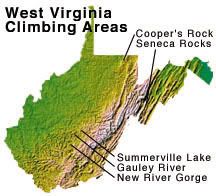
West Virginia is one of the highest-rated rock climbing areas in the eastern United States.
Cass Railroad State Park
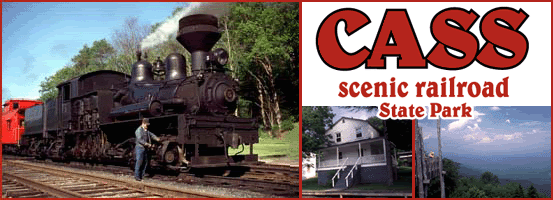
Cass, West Virginia was founded in 1901 by the West Virginia Pulp and Paper Company (now known as Westvaco). It was built as a company town to meet the neds of the men who worked in the nearby mountains cutting hemlock and spruce trees for the West Virginia Spruce Lumber Company.
In 1960, due to the decline of the timber industry in the region, the town of Cass was abandoned. The rail line at Cass and the Shay locomotives (the only locomotives capable of making it up the steep grade) were planned to be scrapped, but Russell Baum, a railroad fan, purchased the line and convinced the legislature to make Cass Railroad into a state park. in 1963, the first train filled with tourists instead of timber made its way from the Cass Depot, headed four miles up the line to the Whittaker Station.

The Cass Scenic Railroad train ride takes you 11 miles up the track which was laid in 1901 by immigrant workers. Traveling on steep grades of the Cheat Mountain, the train runs through switchbacks with a grade of up to 11% (a 2% grade on modern railroads is considered steep). Three trips are available: a two-hour round trip to Whittaker Station, a five-hour round trip to the ghost town of Spruce, and a five-hour round trip to Bald Knob, the second highest point in the state.
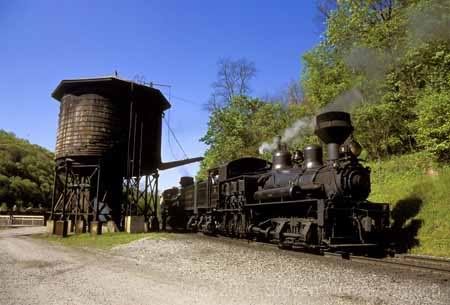
A logging camp has also been recreated at the park by the Mountain State Railroad & Logging Historical Association. This camp shows both the living quarters and the equipment used by the loggers.
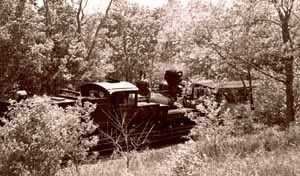
Nowadays, the town of Cass remains relatively unchanged. The old company houses have been restored, adding an air of nostalgia to the town. There is a museum and a company store in the park which tourists can visit and buy souvenirs.
Hawk's Nest - A Place of Beauty and Tragedy

"Construction of nearby tunnel, diverting waters of New River through Gauley Mt for hydroelectric power, resulted in state's worst industrial disaster. Silica rock dust caused 109 admitted deaths in mostly black, migrant underground work force of 3,000. Congressional hearing placed toll at 476 for 1930-35. Tragedy brought recognition of acute silicosis as occupational lung disease and compensation legislation to protect workers."
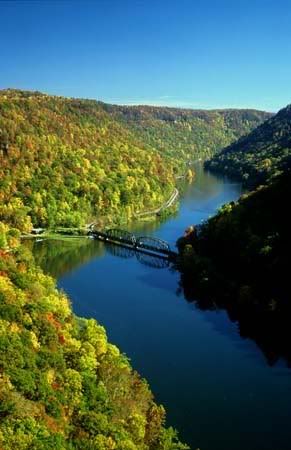
Hawk's Nest Overlook
Thunder In The Valley

"Thunder In The Valley" is an annual event held in Charles Town, West Virginia to help celebrate and remember its Civil War heritage.
During the Civil War, Shenendoah Valley was a strategic point as it was on the main travel route between the north and the south, and the control of the town of Charles Town changed hands between the Confederate and the Union 18 times. Harper's Ferry, another town in the valley, changed hands 8 times.
During "Thunder In The Valley," participants dress up in Union and Confederate dress and re-enact battles. Replicas of Union and Confederate camps are set up during this event, along with the formation of wagon train to Charles Town and a military ball. Also, the "Blue/Grey Classic Horse Race is run.
Fasnacht - Mardi Gras in West Virginia
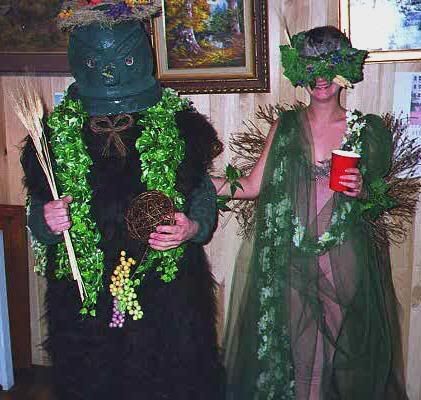
In New Orleans and other places in the world, the period before lent is celebrated as Mardi Gras.
West Virginians in the city of Helvetia have their own version of Mardi Gras called Fascnacht. This celebration was brought to West Virginia in the 19th century by Swiss immigrants. Fasnacht is a combination of the celebrations of Mardi Gras with the Winterfest of Switzerland.
The residents of Helvetia prepare for Fasnacht by deep frying donuts, rosettes, and hosenblatt pastries in lard and by decorating the town hall with Swiss lampions (paper lanterns with candles) and ribbons. The hang an effigy of Old Man Winter by the neck in the middle of the dance floor and create elaborate masks.
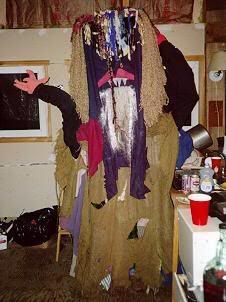
At dark on the Saturday before Ash Wednesday, the people of Helvetia don their masks and decorate their homes with scary figures to frighten away Old Man Winter. They congregate at the local restaurant, light the lampions and march to the dance hall, where they parade around the dance floor as their masks are judged. Then they dance schotisches, waltzes, polkas, and squares until midnight, when the effigy of Old Man Winter is taken down, roughed up, cursed at and thrown into a bonfire and burned, showing that it is time for Winter to end and Spring to begin.
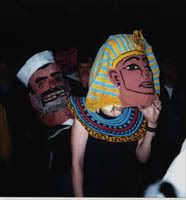
Monday, June 11, 2007
The Oil and Gas Industries in West Virginia
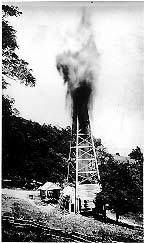
In the early 1800's, oil and gas were of no importance to West Virginians. As a matter of fact, oil and gas were frequently hit by drillers when drilling for salt and were considered a nuisance. So much oil was diverted to the Kanawha River that it became known as "Old Greasy" to the boatmen. In 1815, while drilling for salt, gas was first struck in Charleston. By 1826, oil was used for lamps in factories and workshops.
"On the Little Kanawha River, near the Hughes River, was a stream called Burning Springs Run, named because there were two springs at its mouth from which natural gas escaped. As early as 1781, Thomas Jefferson described the brilliant flame which could be produced by thrusting a lighted candle into the escaping gas at this site. Because gas and salt brine were often associated, the Rathbone brothers bored a salt well near these springs. However, rather than salt, at a depth of 200 feet they hit petroleum and by boring deeper, they were able to produce 200 barrels per day in 1859. Although petroleum was not the treasure that the Rathbones sought, they were encouraged by their find and drilled a second well which yielded 1,200 barrels of petroleum daily. News of the Rathbone brothers' discovery spread rapidly and created tremendous excitement. By 1861, a town with several thousand inhabitants had sprung up. All of the light in the newly-formed town, including that for a brilliantly lit hotel, was provided by natural gas. The widespread use of gas in this town marked the beginning of the era of gas development in West Virginia. Meanwhile, hundreds of thousands of barrels of oil were being floated down the river to Parkersburg where they were then sent to other cities by rail or river. The Burning Springs oil field was one of only two oil fields in America prior to the Civil War. But by 1876, there were 292 wells in the State, producing a total of 900 barrels daily. Parkersburg was the chief oil market. "
(from http://www.wvgs.wvnet.edu/www/geology/geoldvog.htm)
West Virginia's oil industry reached its peak in 1900, producing 16 million barrels. The oil industry began to decline after that, although the gas industry was growing. From 1906 to 1917, West Virginia was the leading producer of gas in the United States. After that, the state's gas production declined, until 1970 when it gained momentum again.
Beckley Exhibition Coal Mine
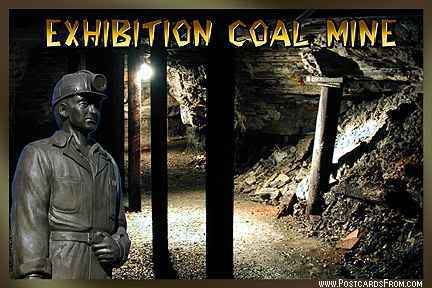
The exhibition coal mine in Beckley, West Virginia was once an actual working coal mine that now is a popular tourist attraction. In 1910, the mine closed and it repoened in 1960 as a tourist attraction. The city of Beckley was built around the mine's entrance and the area around it became a city park.
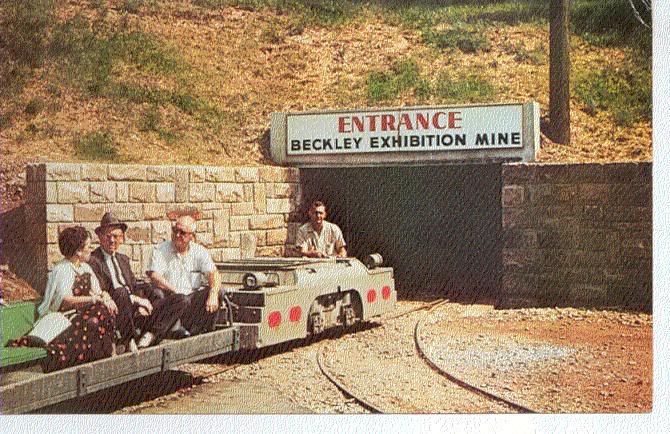
At the mine, you can take a tour thru the actual mine conducted by a real miner. You can also visit the gift shop, tour the coal museum, visit a coal miner's house, visit a coal town church, and tour the kid's learning center.
The coal miner's house and coal town church are furnished on the inside with antiques from the 1940's and 1950's to give you an idea of what life was like back then.
Coal Heritage Trail
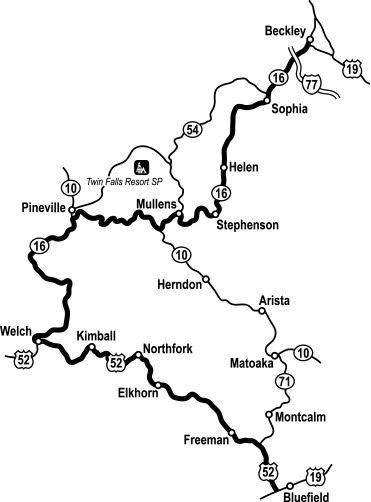
Coal Heritage Trail is in southern West Virginia. It begins in Beckley and travels south to Bluefield. The byway is nearly 100 miles long and follows WV 16 and US 52.
Coal Mining in West Virginia
(from http://www.wvgs.wvnet.edu/www/geology/geoldvco.htm)
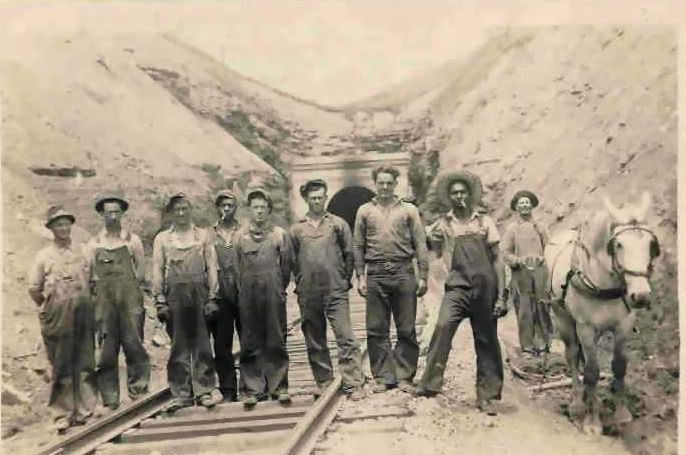
Miners in Raleigh County
It wasn't until the mid 1800's that coal mining began to be a major industy in West Virginia. Until that time, although coal was known to exist in West Virginia, there wasn't a real need to mine it because of the abundance of wood and lack of coal manufacturing industries. In 1810, people of Wheeling began to use coal from a nearby mine to heat their homes. In 1811, the first steamboat on the Ohio burned coal from the Ohio banks. By 1817, coal began to replace charcoal as fuel for many Kanawha River salt furnaces. in 1836, due to the enormous amount of attention given to the western Virginia coal fields, Professor William B Rogers, Virginia's foremost geologist, was sent to the mines to analyze the coal in eight counties. By 1840, the total coal production was up to 300,000 tons. Between 1840 and 1860, many coal companies were organized and corporations were established under the laws of Virginia to encourage financial investments from foreign countries.
When the Civil War broke out, the Kanawha Valley mines were closed. Many of the dams along the river were destroyed and confederate troops set up camps in the valley, preventing shipping. The Elkins and Fairmont coal fields in the north remained active, providing coal for the Union.

Fayette County, West Virginia miners
After the Civil War, renewed interest in the state's mineral resources brought new growth and development of the coal industry. By 1880 there were extensive operations in Mineral, Monongalia, Marion, Fayette, Harrison, Ohio, Putnam, and Mason counties. In 1901, the Fairmont Coal Company was formed, which later became the Consolidation Coal Company. Many of the coal mines owed their success to the Chesapeake and Ohio Railway. As the railroad grew, the coal became more available for marketing, making the coal fields prosper.
As the coal industry grew, mining methods and laws changed rapidly. In the earliest days, local farmers and slaves surface mined the coal, using picks and shovels to remove the overburden. The coal was then dug out, shoveled into baskets and sacks, and carried away. Later, sleds, wheelbarrows, and carts came into use in deep mining, hauled by oxen, mules, goats, dogs, and sometimes men. Progress in mechanization was slow, as operators did not want to pay for expensive new equipment, and miners feared being replaced by it. Also, many felt that the old bank mule was more reliable. By 1890, however, electric coal cutting, loading, and hauling machines came into use, and mules were used less frequently. After 1936, mechanization went forward very rapidly, with shuttle cars, long trains, conveyor belts, and all kinds of large mining machinery coming into common use. Large-scale surface mining did not start until 1914, but with the development of huge shovels and draglines, the overburden can now be removed more easily and in recent years this method has become a major method of mining coal in West Virginia. Two peaks occurred in West Virginia's coal production: in 1927 production reached 146,088,121 tons and in 1947 it peaked at 173,653,816 tons. (from http://www.wvgs.wvnet.edu/www/geology/geoldvco.htm)
Because the coal mines were often located far from towns, the coal companies often built their own coal company towns, complete with company stores, affordable housing, churches, and sometimes even recreational facilities for the miners and their families. A method of bookkeeping using coal scrip (tokens) was even established, due to the miners' daily needs. Miners could get an advance credit on their salary in scrip to buy necessities from the company store. Each mine had its own scrip symbol on the tokens, which could only be used at the local company store.
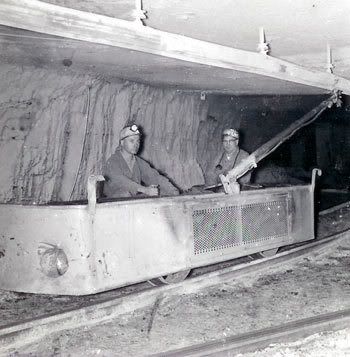
As the coal industry continued to grow, many of the coal companies began to be run by out of state superintendents and being supported by out of state capital. Immigrants from Wales, Scotland and England were brought over to work in the coal mines. The superintendents brought over cheap foreign labor and often abused them with poor medical care, long working hours and inferior living conditions in general. The poor working conditions in the mines brought about the first West Virginia coal mining legislation in 1883. This legislation appointed a state mine inspector who was to inspect all mines for adequate safety conditions. The state union of United Mine Workers of America was established in 1890 in Wheeling to push for better working conditions. The West Virginia Department of Mines was created in 1905 to enforce inspection laws. However, it wasn't until the Franklin D Roosevelt era that the federal goverment stepped in to help the miners. The National Industrial Recovery Act established an 8-hour work day and a minimum wage provision. The act was later declared unconstitutional, but by then most of the mining companies had unionized. Since the 1930's, the union has been a force in providing for the welfare, retirement and other benefits for miners.



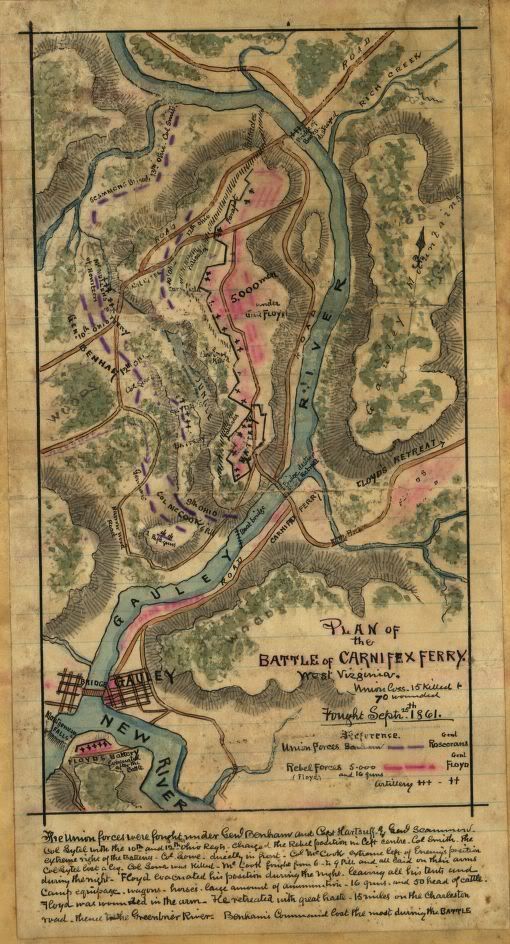



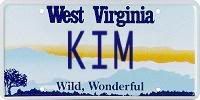

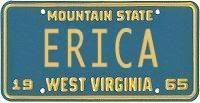
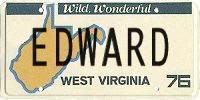
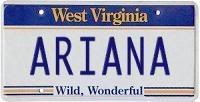
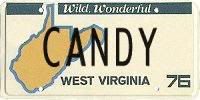
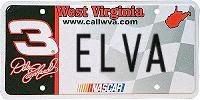 and special thanks to our intern
and special thanks to our intern
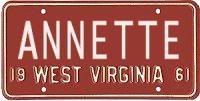 for her help
for her help










 Black Bear
Black Bear
 Cardinal
Cardinal
 Sugar Maple
Sugar Maple
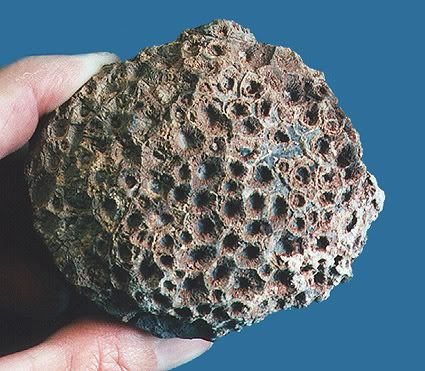 Silicified Mississippian Fossil Coral
Silicified Mississippian Fossil Coral
 Rhododendron
Rhododendron
 Golden Delicious Apple
Golden Delicious Apple
 Monarch
Monarch
 European Honeybee
European Honeybee
 Brook Trout
Brook Trout







